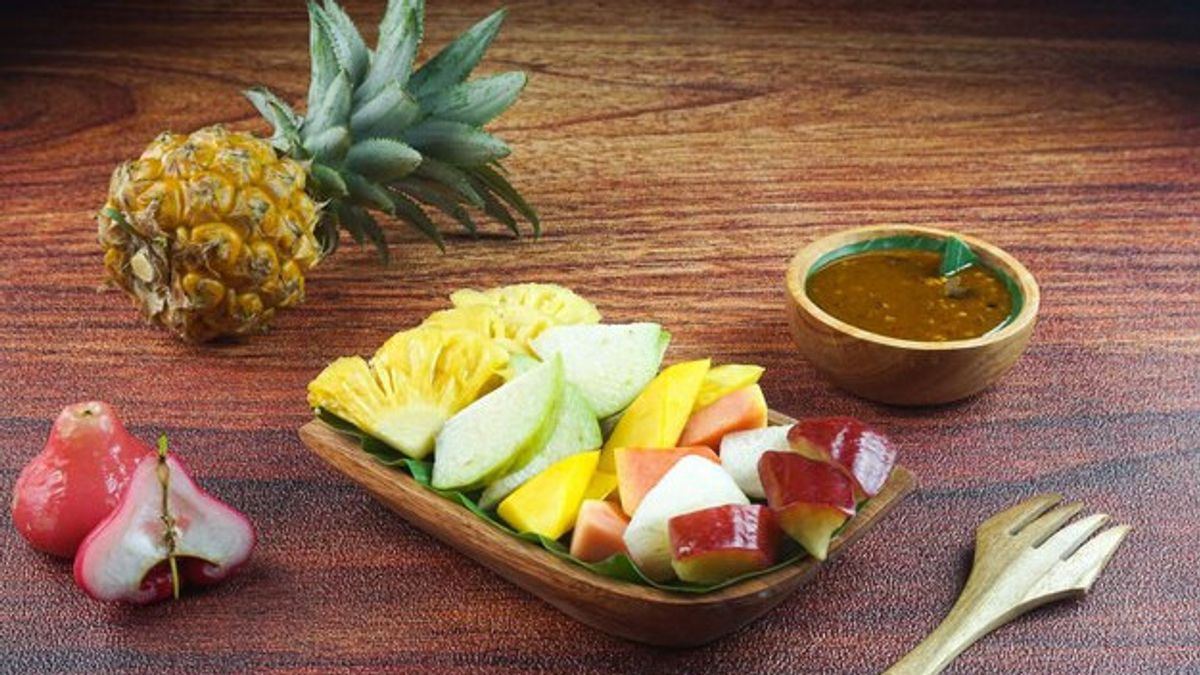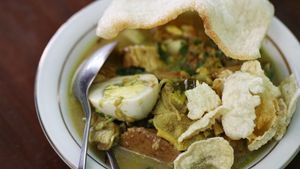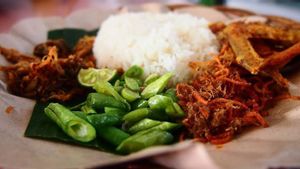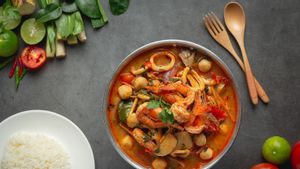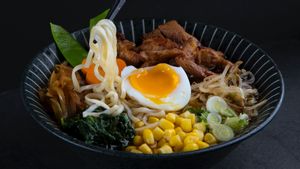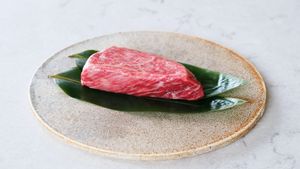YOGYAKARTA Rujak is one of the dishes made from fruits and vegetables that are seasoning in certain areas. In Indonesia, because it consists of many islands and areas that have different earth products and typical ways of processing, have dozens of types of rujak. Rujak itself, is understood as one of the dishes whose contents are cut into pieces, destroyed, sorted, or cut off. The following, types of rujak in Indonesia are very varied but have the same flavor character, namely fresh, sour, sweet, spicy, and savory.
The type of rujak in Indonesia was the first, quite unique. The name is according to the rujak content, one of which is the mouth or mouth of the cow which has a chewy texture, such as a young bone. Rujak cingur was brought by immigrants from Madura Island in the 1930s and this culinary development developed in the capital of East Java, Surabaya.
The sambal is quite unique, because the mixture of cold fried beans, petis, brown sugar, chilies, fried onions, salt, and a young banana klutuk slice. The sambel results are thick and have a savory, sweet, spicy taste. Several variations, added pineapple and bengkuang to add fresh flavor. For filling, in addition to rice, boiled kale leaves, sprouts, cucumbers, long beans, lontong, tempeh and fried tofu are also added.
At first glance it looks like salt, but it's a little different. The contents are vegetables and fruits. The seasonings are regular rujak spices, namely from fried peanuts and then joked and added vinegar to add sour taste. Overall, this rujak vinegar from Bandung has an acidic and spicy taste.
Raspecifized peris comes from Ponorogo, East Java. Slightly different from rujak cingur, although the chili sauce comes from the same ingredients, namely petis, fried beans, typical kitchen spices, and young glutuk bananas are exported until they get a little textured chili sauce. The contents, using a mixture of young mangoes, cucumbers, bengkuang, kedondong, boiled kale, kampung, lontong, tempeh and tofu gore, and cecek meat or beef. What makes it lively when eating rujak petis, are crackers that mount over a plate of rujak.
Rujak kuah pindang, is a typical Balinese dish. Served with fruit fillings, including mango, bengkuang, kedondong, cucumber, papaya, and pineapple. Uniquely, this rujak is flavored which is a mixture of bendang fish broth, sugar palm, terasi, salt, and chili.
Still a fresh but thick dish with a sea aroma, which also comes from Bali. Rujak bulung, made of seaweed or untuk. Served with pindang sauce with sangrai coconut lungs and enveloping pieces to get aromatic dishes.
Many people say that Yogyakarta's cooking is typical of sweet taste. Including rujak dishes, combined with traditional ice cream that is soft and sweet. But you can order a level of roughness according to your taste for a bowl of ice cream containing small fruits.
Types of rujak in Indonesia, are indeed very diverse. Rujak itself, is a food made from fruit accompanied by sheared vegetables. Rujak ebi is a typical type of Singkawang rujak. The contents are in the form of watered fruit pieces with rujak spices. Uniquely, the cut of ebi becomes a hat that adds to the taste.
If you travel to a cold area in East Java, namely Malang, make sure to taste the rujak gobet. Rujak, whose fruits are cut off, is doused with spicy, sweet, and savory spices. The freshness of the fruit enriches the taste of the rujak gobet dish. This rujak, also commonly served at seven-month events for pregnant women, or known as mitoni traditions.
Rujak juhi is a typical Betawi food, this is also the acculturation of Chinese and Betawi culture. Juhi means sotong or squid that has been processed fermented and then dried.
Rujak juhi contains soun or bihun and lokio-type vegetables. The sprouts and white mustard also enrich the filling and taste. The seasonings, made from cold fried beans and vinegar.
Rujak kweni is also known as rujak Aceh. This rujak is made of kweni mangoes mixed with chili, sugar, salt, and Javanese acid. The contents are in the form of fruits such as other fruit rujak. But most uniquely, the kweni rujak damps the collangs as filling.
This typical Palembang noodle rujak is also attached to the cuko sauce that is usually used for pempek dishes. Still has a fresh and sour taste and a vague sweet taste, this dish can be an option when you want to eat foods that are not heavy but still filling. The reason is, this type of rujak filling, in the form of yellow noodles and cucumber.
The next type of rujak in Indonesia, is very unique. You could say its name is like fussion food, for example cropping. Rujak soto is typical of Banyuwangi, which is a combination of vegetables and soto. Usually the rujak is labeled first. Then there is watered by the soup soto. Even more uniquely, the weather with the petis chili blends with the purih bespic aroma of soto.
SEE ALSO:
It is called a masher or bebeg because it is made in this way. The ingredients are pounded with lembahan from lumping or wood. The contents are distinctive, the rujak, which is popular in the Sundanese area, tends to be acidic because it is mixed with Balinese oranges. The sauce is given an additional ebi or terasi as a flavorer.
Dishes in the Lombok area, typical of spicy taste but having a fresh flavor that mingles. As with rujak terasi, fresh dishes mixed with sugar, chili, salt, and terasi, have a fresh taste. The contents are in the form of fruits that are in season.
Rujak u groh comes from Aceh, made from young coconut which is dredged from its shell. Coconut meat is dredged to produce flat and long shapes. Then mixed with spicy rujak and savory spices mixed with lime. Imagined spicy taste, sweet, and sour type rujak in Indonesia this one?
The English, Chinese, Japanese, Arabic, and French versions are automatically generated by the AI. So there may still be inaccuracies in translating, please always see Indonesian as our main language. (system supported by DigitalSiber.id)
